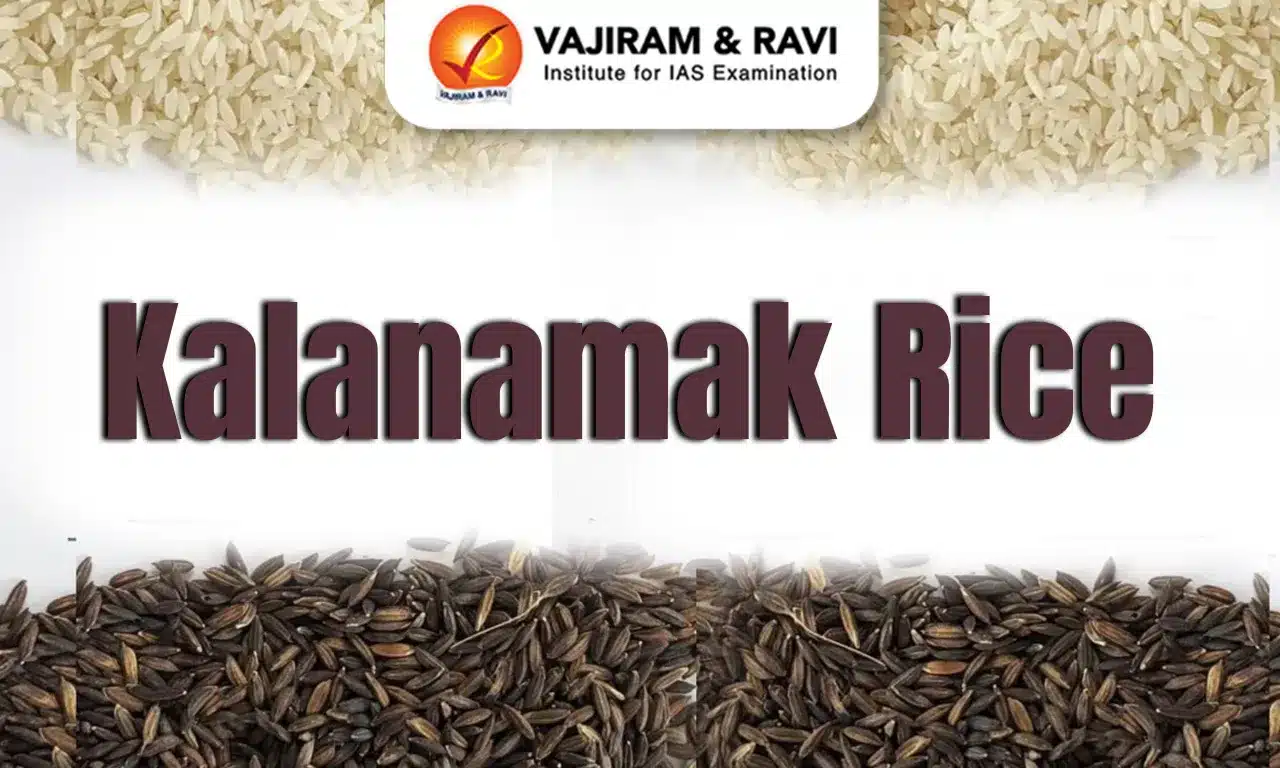Kalanamak Rice Latest News
The Uttar Pradesh government, in consultation with the commerce ministry, plans to promote the export of Kalanamak rice to countries with majority or large Buddhist populations.
About Kalanamak Rice
- Kalanamak is a traditional variety of paddy with black husk and strong fragrance.
- It is considered a gift from Lord Buddha to the people of Sravasti when he visited the region after enlightenment.
- It is traditional, non-basmati aromatic rice grown in eastern Uttar Pradesh, particularly in Siddharth nagar, where it has been designated as an ODOP (one district one product) item.
- It is also grown in 11 districts of the Terai region of north-eastern Uttar Pradesh and in Nepal, the traditional variety has been prone to ‘lodging’, a reason for its low yield.
- Lodging: Lodging is a condition in which the top of the plant becomes heavy because of grain formation, the stem becomes weak, and the plant falls on the ground.
- It is a nutritional powerhouse. It is rich in iron and antioxidants, has a low glycemic index, and is naturally gluten-free, making it a healthy dietary choice, especially for diabetics.
- It is protected under the Geographical Indication (GI) tag system.
Kalanamak Rice FAQs
Q1: Who developed kalanamak rice?
Ans: Dr. R. C. Chaudhary
Q2: Which district is Kala Namak Rice grown in?
Ans: Siddharthnagar
Source: LM
Last updated on December, 2025
→ Check out the latest UPSC Syllabus 2026 here.
→ Join Vajiram & Ravi’s Interview Guidance Programme for expert help to crack your final UPSC stage.
→ UPSC Mains Result 2025 is now out.
→ UPSC Notification 2026 is scheduled to be released on January 14, 2026.
→ UPSC Calendar 2026 is released on 15th May, 2025.
→ The UPSC Vacancy 2025 were released 1129, out of which 979 were for UPSC CSE and remaining 150 are for UPSC IFoS.
→ UPSC Prelims 2026 will be conducted on 24th May, 2026 & UPSC Mains 2026 will be conducted on 21st August 2026.
→ The UPSC Selection Process is of 3 stages-Prelims, Mains and Interview.
→ UPSC Result 2024 is released with latest UPSC Marksheet 2024. Check Now!
→ UPSC Prelims Result 2025 is out now for the CSE held on 25 May 2025.
→ UPSC Toppers List 2024 is released now. Shakti Dubey is UPSC AIR 1 2024 Topper.
→ UPSC Prelims Question Paper 2025 and Unofficial Prelims Answer Key 2025 are available now.
→ UPSC Mains Question Paper 2025 is out for Essay, GS 1, 2, 3 & GS 4.
→ UPSC Mains Indian Language Question Paper 2025 is now out.
→ UPSC Mains Optional Question Paper 2025 is now out.
→ Also check Best IAS Coaching in Delhi
Tags: kalanamak rice prelims pointers upsc current affairs upsc prelims current affairs

















